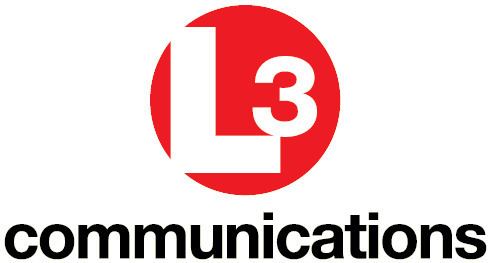Type Public Founded 1997 Parent organization L 3 COMMUNICATIONS CORP | Industry Aerospace, Defense | |
 | ||
Traded as NYSE: LLLS&P 500 Component Revenue US$ 12.629 billion (2013) US$ 13.146 billion (2012) CEO Michael T. Strianese (23 Oct 2006–) | ||
L3 Technologies, formerly L-3 Communications Holdings, is an American company that supplies command and control, communications, intelligence, surveillance and reconnaissance (C3ISR) systems and products, avionics, ocean products, training devices and services, instrumentation, space, and navigation products. Its customers include the Department of Defense, Department of Homeland Security, U.S. Government intelligence agencies, NASA, aerospace contractors and commercial telecommunications and wireless customers.
Contents
- History
- Acquisitions
- Business organization
- Management
- Naming
- Products
- EOTech Defective Holographic Sights Lawsuit
- Federal contract suspension
- References
L3 is headquartered in Murray Hill, Manhattan, New York City.
History
L3 was formed as L-3 Communications in 1997 to acquire certain business units from Lockheed Martin that had previously been part of Loral Corporation. These units had belonged to Lockheed Corporation and Martin Marietta, which had merged three years before in 1993. The company was founded by (and named for) Frank Lanza and Robert LaPenta in partnership with Lehman Brothers. Lanza and LaPenta had both served as executives at Loral and Lockheed.
L3 continued to expand through mergers and acquisitions to become one of the top ten U.S. government contractors.
On November 4, 2010 L3 issued a part purge notification to prevent future use of Chinese counterfeit parts, but did not notify its customers whose display systems suffered from much higher than expected failure rates.
Acquisitions
Business organization
As of 2016, L3 is organized under three business segments:
Management
Frank Lanza, CEO and co-founder, died on June 7, 2006. CFO Michael T. Strianese was named as interim CEO, and was appointed Chairman, President and CEO of the company on October 23, 2006.
Naming
L3 Technologies was originally named L-3 Communications for the last initials of its founders Frank Lanza, Robert LaPenta, and Lehman Brothers. Despite the similarity in naming, there is no corporate connection between L3 Technologies, formerly known as L-3 Communications, and networking provider Level 3 Communications, whose name is often abbreviated "L3" in informal industry communication.
On 31 December 2016, L3's company name changed from L-3 Communications Holdings, Inc. to L3 Technologies, Inc. to better reflect the company's wider focus since its founding in 1997. The company's website changed from L-3com.com to L3T.com, but the company's NYSE ticker symbol of LLL remained the same.
Products
EOTech Defective Holographic Sights Lawsuit
In 2015, L3 Technologies agreed to pay $25.6 million to settle a lawsuit with the U.S. Government. L3 was accused of knowingly providing the U.S. military with optics that failed in extreme temperatures and humid weather conditions. These sights were provided to infantry and special operations forces operating in Afghanistan and Iraq, as well as civilians and law enforcement.
The civil fraud lawsuit was filed by Preet Bharara, in the Southern District of New York. The lawsuit alleged L3 officials have known since 2006 that the holographic sights being sent to Iraq and Afghanistan failed to perform as advertised in extreme temperature ranges. The lawsuit alleges that the FBI independently discovered the thermal drift defect in March 2015 and presented EOTech with "the very same findings that the company had documented internally for years. Shortly thereafter, EOTech finally disclosed the thermal drift defect to DoD." According to court documents, EOTech had advertised that its sights performed in temperatures ranging from -40 degrees to 140 degrees Fahrenheit, and in humid conditions.
In temperature extremes the sights exhibited thermal drift, which is when the sight's point of aim differed from its point of impact.|
John Bailey, director of marketing at EOtech said,
Thermal drift is basically when you go from ambient temperature to temperature extreme there is going to be a point of impact shift...We have realized that our sight could shift … in those extremes, -40 and 122 Fahrenheit.
The sights also suffered from reticle fading and parallax.
Federal contract suspension
In 2010 it was announced that L3's Special Support Programs Division had been suspended by the United States Air Force from doing any contract work for the US federal government. A US Department of Defense investigation had reportedly found that the company had, "used a highly sensitive government computer network to collect competitive business information for its own use." A US federal criminal investigation ended the temporary suspension on July 27, 2010.
